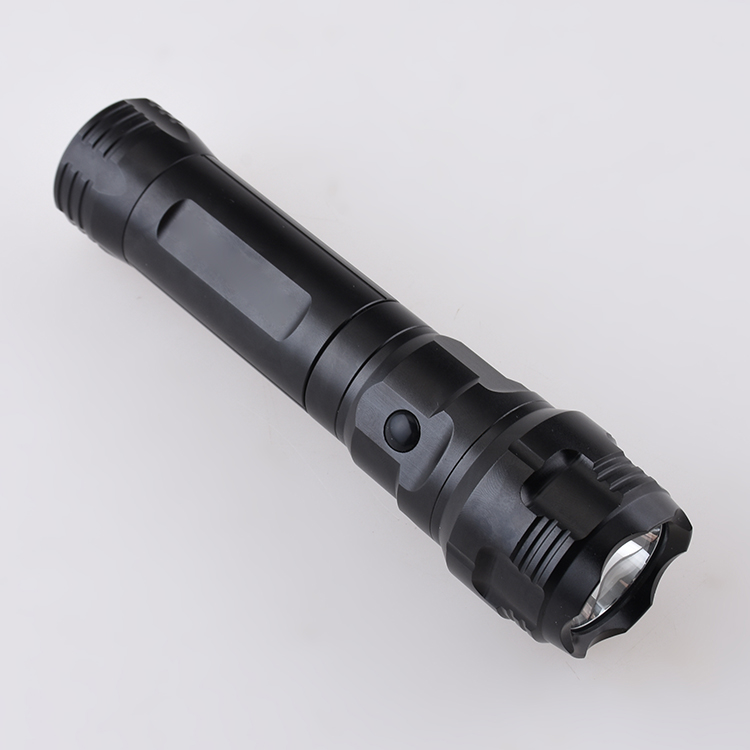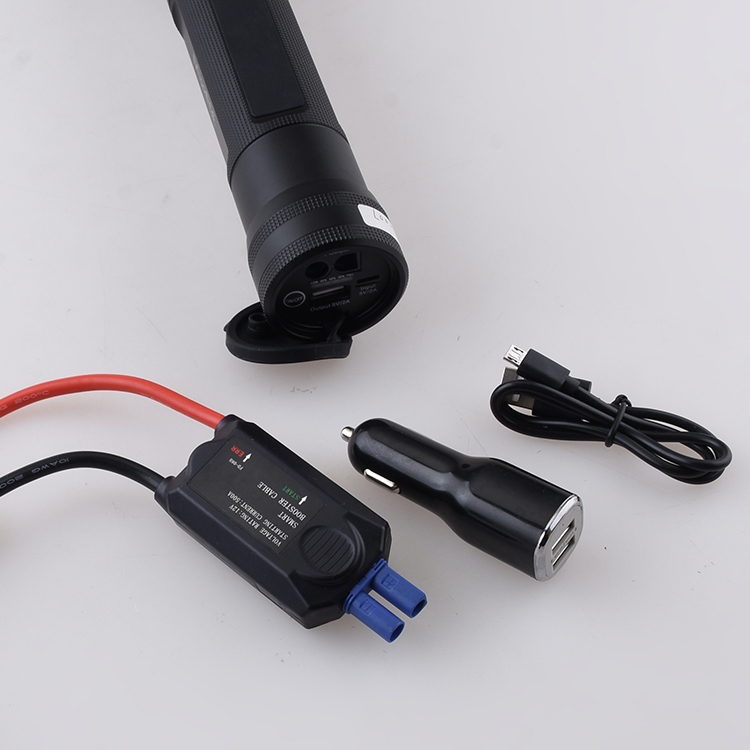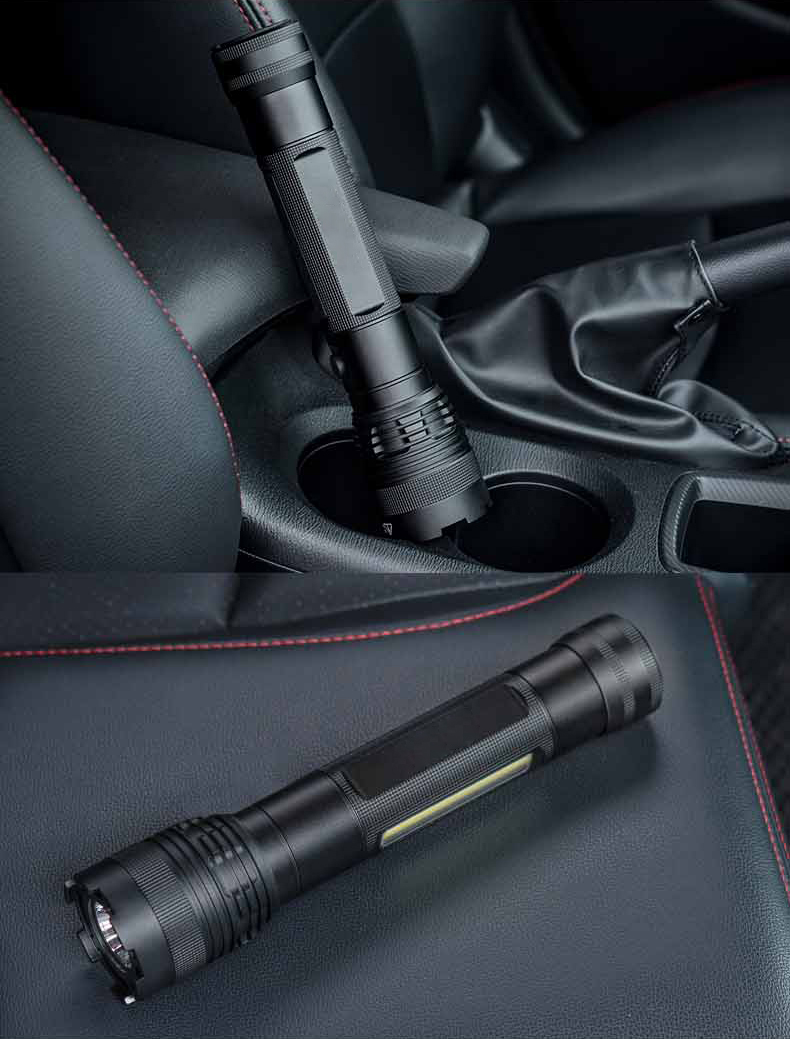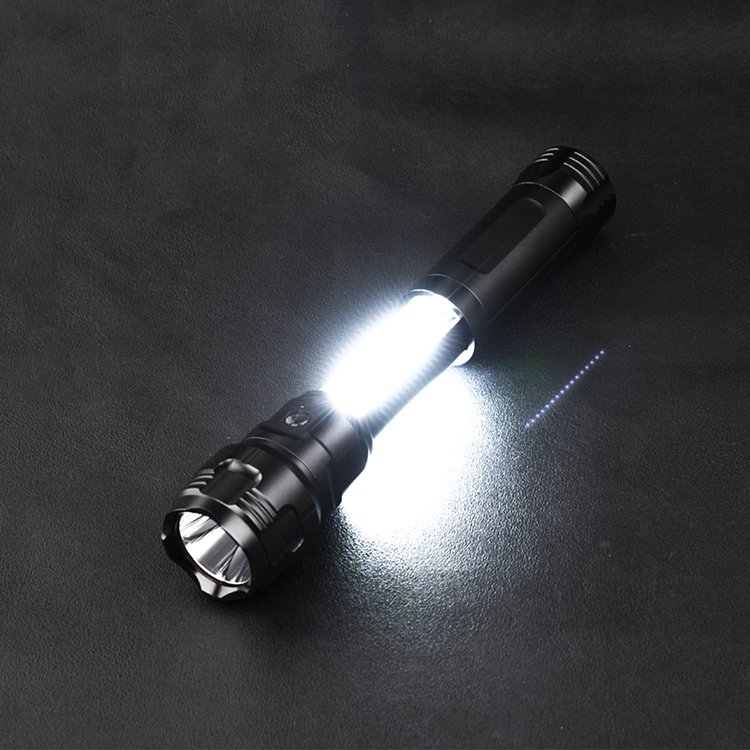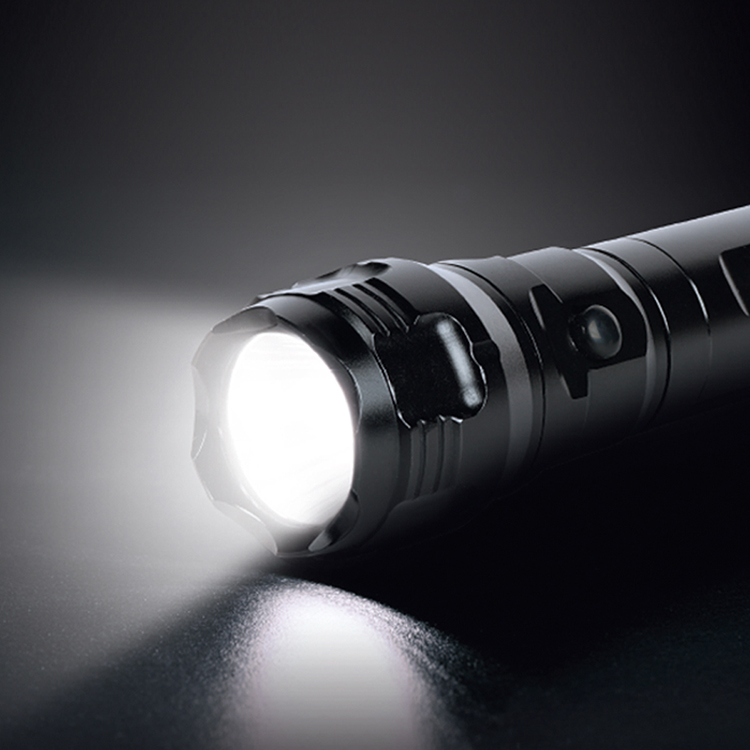Do you often find yourself in situations where you need to brighten up your surroundings? Or do you need a flashlight for self-defense and emergencies? A tactical or EDC flashlight is an ideal accessory to have with you. It can help you navigate during the night or create a light in life-threatening situations. However, each EDC and tactical flashlight’s design, performance, and features differ.
Finding the flashlight that best suits your needs requires careful evaluation of flashlight specifications, which set apart tactical and EDC flashlights. This guide will explore construction, battery, beam patterns, SOS, strobe, accessories, mounting options, and differentiating factors in EDC and tactical flashlights. A standard flashlight will follow the ANSI/NEMA FL-1 standard to develop its flashlights. Consider the flashlight’s compliance with the standard for a standardized approach. So, let’s begin our analysis!
Tactical Flashlights
The application of a tactical flashlight is the basis for its design, material, and features. It must work in high-stakes conditions often faced by law enforcement, military, and security personnel. Let’s look at the aspects that make a flashlight tactical.
Design and Construction
Tactical flashlights should operate efficiently and accurately, irrespective of the environmental conditions. Their design and construction have the following features which make them tactile and reliable:
Light Source
Modern flashlights have LED lights that provide a robust, energy-efficient lumens source. These can be CoB LEDs (or chip-on-board LEDs) that provide lumens for the same power consumed by a regular SMD LED. Depending on its dimensions and purpose, the range of lumens from a tactical flashlight can start at a mere 200 and go up to ultra-high lumens of 3000.
Metal Body
Manufacturers know that the body of a tactical flashlight needs to be made of a high-quality, lightweight material that provides toughness in all conditions. This leads to the use of lightweight aerospace-grade aluminum, which offers excellent resistance to wear and tear during regular storage and use.
Impact Resistance
ANSI and the National Electrical Manufacturers Association (NEMA) define a flashlight’s impact resistance. It involves dropping the flashlight from a specific height and evaluating the damage to the flashlight. Manufacturers often check their whole lineup with the same height for comparative results. Most sellers widely adopt the 1-meter height practice to check impact resistance. The test repeats multiple times until it fails.
Waterproofing
The IP (Ingres-Protection) rating is the widely accepted method for rating waterproofing in electronic devices. A tactical flashlight must resist water and dust protection, as it is necessary for first responders in critical situations involving rain, dust, mud, or water submersion. A flashlight with an IPX8 or IP68 rating is typical of a high-end flashlight. IP68 means it can completely resist dust ingression and handle immersion inside water under pressure for long periods.
Discuss the rugged design and durable construction of tactical flashlights, designed to withstand harsh conditions. Highlight materials used, such as aerospace-grade aluminum, and features like impact resistance and waterproofing.
Performance Features
Features that add value to a tactical flashlight can be vital for some users. In the case of self-defense, rescue, and law enforcement activities, the requirements of features may differ. Here are some features to consider in tactical flashlights:
Source Light Color
The light sources are CoB LED lights, which can come in various colors due to their exceptional ability to create colors. Some flashlights offer red CoB for tactical purposes. Tactical pistol and rifle flashlights have a red dot laser that enhances target hits.
Strobe
Law enforcement users can use the strobe light pattern to alert citizens of disturbing law and order. The strobing pattern is rapid flashes of light in a short interval. It is not for visibility but to alert or cause visual disturbance so the adversary cannot identify you correctly.
SOS
In a dangerous and threatening situation, users can turn on the flashlight’s SOS mode, which will flash the light in “S-O-S” (3x short, 3x long, 3x short) in Morse code. The international distress signal originates in the maritime field, where sailors on board created the “Save Our Ship” signal for help in case of a vessel sinking.
Tactical Beam Patterns
Finding a suitable flashlight for you requires careful evaluation of its beam patterns. Flood, spot, and tactical patterns are the most popular. A flood beam pattern focuses on a diffused beam pattern to lighten a large area. A spot pattern light is a concentrated beam within a specific angle to enhance visibility in a small area. A tactical pattern combines the best of both worlds with a spotlight in the middle and flood around it.
Battery and Power
Tactical flashlights need to work at all times. In most cases, recharging a battery is not possible. In tactile flashlights, a replaceable battery is the ideal implementation of a power supply to the LED light module. Here are the reasons why:
Rechargeable Vs. Replicable Batteries in Tactical Flashlight
Picking a rechargeable tactical flashlight is a choice. A rechargeable tactical flashlight makes sense if you operate in an area with a power socket nearby. You can have two tactical flashlights, one on charge and the other in use.
Replaceable batteries are a better option in remote areas where charging is impossible. They are also ideal for first responders operating in urban areas. They provide instant power to the flashlight without delay, and storing batteries takes up little space.
Ideal Battery Capacity for Tactical Flashlight
Tactical flashlights can feature a rechargeable lithium-ion battery or CR123A battery. Manufacturers will mention their flashlight backup time in the product specifications. A typical Gun Rail Firearm Tactical Flashlight can support a CR123A battery with a 4-hour backup. It boasts a 400 Lumens light source that can illuminate up to 656ft/200m. Similarly, rechargeable batteries such as the 18350 can charge and provide 14 hours of backup time.
Accessories and Mounting Options
Tactical flashlights can house numerous accessories and mounting features that allow them to work in various scenarios. These can be situations of emergency or high-stakes rescue operations. Here are some accessories and mourning options for tactical flashlights:
Accessories on Tactical Flashlights
A typical tactical flashlight has a standard lanyard, Holsters, and O-rings, ensuring the flashlight securely mounts to the user’s kit belt. In advanced flashlights, manufacturers provide a spare battery that users can charge and keep in their kit belt for immediate replacement in case of need.
High-power tactical flashlights can also include vehicle starters to jump-start cars in case the batteries run out. Some tactical flashlights can also include a cutting mechanism, which can be particularly helpful in car accidents, which is typical for law enforcement personnel.
Mounting Methods of Tactical Flashlights
Tactical flashlights can have mounting methods as an inherent feature. They can be mounted on helmets, firearm barrels, rails, straps, and belts. Picatinny rail mounting is excellent for mounting flashlights on rifles; however, in the case of guns, specialized gun rail mounting flashlights are compact and have a smaller CR123A battery.
In the case of Picatinny rail mounting, the tactical flashlight can only turn on and off with the tail switch at the back of the flashlight. However, accessing it in high-stakes situations can cause a fumble. For that, pressure switches are mounted onto the rifles near the handrest position so the user can immediately turn the light on and off.
EDC Flashlights
EDC (Everyday Carry) flashlights are ideal for your home, car, and backpack. These are great for outdoor and home maintenance activities where visibility is unfavorable due to lighting conditions. These flashlights have features that make them convenient to carry and operate. Let’s analyze their aspects to understand EDC flashlights fully.
Design and Portability
The purpose of the EDC flashlight is to provide a convenient lighting device that works for regular use. If you walk into the woods or just stroll in the mountains at night, an EDC flashlight is the ideal companion. Its compact size and lightweight material are optimized to make it an everyday carry. An average EDC flashlight can fit within the palm.
Manufacturers primarily choose regular aluminum for EDC flashlights. It allows them to be lightweight while ensuring durability. EDC flashlights focus on being easy to carry in pockets and small bags. They typically weigh around 50 grams.
Performance Features
Lighting indoors and just a few feet away is ideal in most everyday scenarios. EDC flashlights are portable and convenient, which makes them an easy-to-carry tool in most scenarios. Here are some features that EDC flashlights provide for a regular user:
- Moderate Brightness: EDC flashlights provide a moderate light output of around 300 lumens. Anything higher than 300 lumens makes the flashlight bigger and consumes more battery. It is enough to light up anything 100-150 meters in a dark rainy night to spot obstacles or potholes. However, the visibility distance depends on many factors.
- Beam Patterns: A typical EDC flashlight will have either a flash or a focused beam. Modern flashlights have an adjustable front lens, which allows users to adjust the beam pattern by pulling on the lens. Pushing the lens into the flashlight results in a focused beam, and you can pull the lens away for a flash. It’s great for any condition, whether focused work or lighting up pathways.
Battery and Power
You can have chagrin or a battery replacement mechanism in your EDC flashlight. However, most people will prefer it to be rechargeable. There are rarely any high-stakes situations in everyday use. These lights can have AA, AAA, or rechargeable batteries. Replacing batteries in EDC lights can be a hassle as they require frequent visits to the market. A typical EDC light can offer 1-8 hours of battery life depending on its user brightness selection.
User-Friendly Features
EDC flashlights are for everyone. There is no need for initial training; a simple look at the instruction manual will get you started. EDC flashlights come with pocket clips made of aluminum or other lightweight material. Usually, manufacturers coat them with scratch—and wear-resistant material to enhance longevity. They can also have magnetic mounts to assist handling during home repair or maintenance activities.
Critical Differences Between Tactical and EDC Flashlights
Tactical and EDC flashlights vary in purpose, application, build, durability, performance, features, size, and portability. A simple table summarizes the differences between them.
| Tampok | Tactical Flashlight | EDC Flashlight |
| Layunin | Specialized applications (law enforcement, military, security) | Everyday use and convenience |
| Aplikasyon | High-stakes scenarios, tactical operations | General tasks, home use, outdoor activities |
| Build | Rugged construction, aerospace-grade aluminum, reinforced bezels, O-ring seals | Less robust materials may have plastic components |
| tibay | Highly durable, resistant to impact, water, and extreme temperatures | Durable enough for everyday use, may not withstand harsh conditions |
| Pagganap | High brightness (1000+ lumens), specialized beam patterns (flood, spot, tactical), tactical features (strobe, SOS, red light) | Moderate brightness (100-500 lumens), adjustable beam patterns, multiple modes (low, medium, high) |
| Mga tampok | High-performance features, weapon-mounting options, additional accessories | Practical features, user-friendly design, compact size |
| Size and Portability | Larger, heavier | Smaller, lighter, more compact |
Choosing the Right Flashlight for Your Needs
Now that we have the necessary knowledge to differentiate between a tactical and an EDC flashlight, we can focus on selecting one. We should start by assessing our needs, and then we can decide to select the suitable flashlight for our scenario.
Assessing Your Needs
Manufacturer may try to oversell their products, which can be confusing. However, if we are clear about what we need, there are meager chances you will buy a product for the feature you do not need. Consider these bullet points to access your need:
- Do you need a flashlight for self-defense?
- Where do you live in urban or rural areas?
- Do you need a flashlight for walking in the dark or for home maintenance?
- Are you expecting to go into the woods and mountains?
- Do you have a power socket available nearby?
- Are you going to mount a flashlight to a firearm?
- Are you a regular user, or do you belong to a professional law enforcement agency?
- Is the light for emergency use only?
After you have answered the above question, we can move to the next phase: making the right decision.
Making an Informed Decision
After thoroughly assessing your needs, you can determine which flashlight suits your usage scenario. Here are some of our usage scenario lists for EDC and tactical flashlights:
Usage Scenario to Prefer Tactical Flashlights
- Law Enforcement
- Gun Mounting
- Fire Fighting
- Mountain Climbing
- Crowd Control
Usage Scenario to Prefer EDC Flashlights
- Household Maintenance
- Walking in the Dark or Rainy Days
- Car Flashlight
- Purse or Backpack Carry
- Keychain Mount
Decision Based on Budget
Tactical flashlights have high-end features that a regular user will not utilize, whereas EDC flashlights have all the necessary features that a daily user will need. Tactical flashlights are great for the outdoors or during adventurous hikes, where flashlights are critical equipment for survival. Spending an extra on tactical flashlights will pay off in law enforcement or survival situations.
Conclusion: Finding the Perfect Flashlight
If you know your usage requirements, finding the perfect flashlight becomes easier. When asked to pick a tactical or EDC flashlight, users can analyze their requirements to make an educated decision. Tactical flashlights are more significant, and they have robust build quality, high-capacity batteries, ultra-bright LED modules, pressure switches, beam patterns, strobe, and red COB for emergencies. At the same time, EDC flashlights will have small dimensions, moderate material, beam adjustments, plastic materials, replaceable cells, and decent brightness for everyday use. Both flashlights’ price/performance ratio is excellent if the user picks the right one.
Shieldon makes tactical flashlights that can jump-start your car engine. These flashlights have bigger batteries and have the necessary wiring to help start a dead battery. Shieldon flashlights also have a red parking light feature to indicate that the user needs help. If you are looking for high-quality tactical or EDC flashlights, Shieldon offers OEM services and customizable products to meet customer needs. Their expertise in developing tactile products makes them an excellent choice for reliable and robust flashlights.
FAQ
- What are the primary features to look for in a tactical flashlight?
A tactical flashlight should have an aerospace-grade metal body, impact resistance, ingress protection (IPX8 Rating), mounting mechanism, 400lumens or higher brightness, strobe, SOS, replaceable battery, and pressure switch fitting capability.
- How does an EDC flashlight’s lumen output compare to a tactical flashlight?
EDC flashlight lumens are usually under 400 lumens, and tactical flashlights typically feature a 1000-lumen brightness with the capability to reduce brightness for specific scenarios. Remember, higher lumens mean better visibility but lower battery life. A 400-lumen brightness is ideal for visibility; however, for self-defense, brighter is better.
- Can EDC flashlights be used in tactical situations?
EDC flashlights are small, making fixing them difficult on firearm mounts. They also have shorter battery life and lower brightness. Their fastening system is not as robust as tactical flashlights, which can have belt-cutting and gun-mounting mechanisms, making them ideal for tactical situations.
- What are the advantages of rechargeable batteries in flashlights?
Rechargeable batteries do not generate waste and reduce your visits to the general store to purchase new batteries. In the case of tactical flashlights, rechargeable batteries are also replaceable, enabling quick switching. However, EDC flashlights may have fixed rechargeable or replaceable batteries that need changing every time they lose their charge.
- How do I choose between a tactical flashlight and an EDC flashlight based on my specific needs?
Tactical flashlights are great for high-stakes scenarios (law enforcement, military), rugged construction, and high-performance. In contrast, EDC flashlights are great for everyday use, convenience, portability, and moderate brightness.

